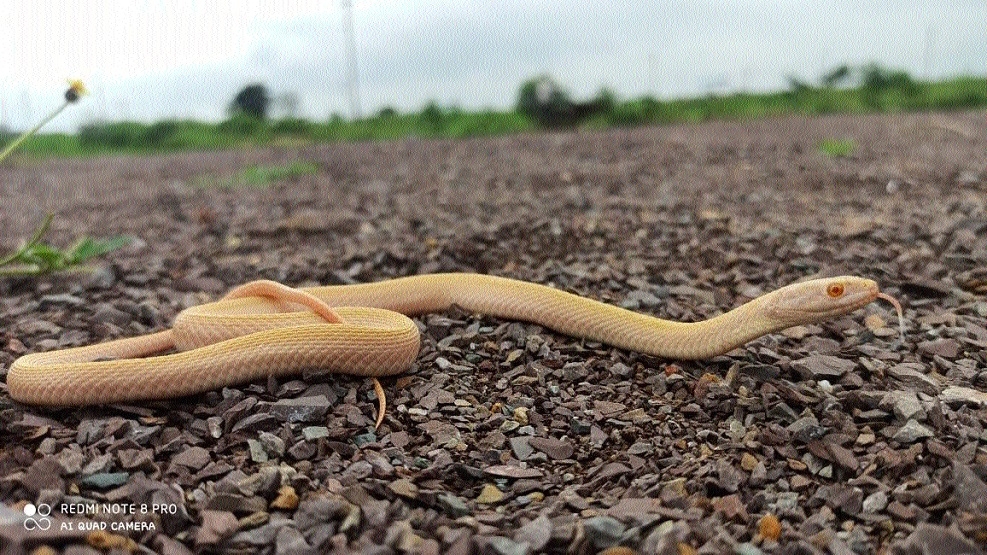Rare Albino snake spotted
Date :24-Jul-2024

Staff Reporter :
RAIPUR,
In a remarkable discovery in Bhilai, a rare Albino Checkered Keelback snake was recently rescued by wildlife enthusiast Avinash Mourya. Avinash received a call about a white snake inside a house, a situation he has often encountered where people kill snakes out of fear.
Upon reaching the site, he discovered a snake with an unusual red and white coloration, characterised by its red eyes. Over the past decade, Avinash has conducted over 5,000 rescues, but this particular colour pattern has been seen very rarely, especially in baby snakes.
Avinash safely captured the snake and identified it as an Albino Checkered Keelback, a rare variant of a common species. Albinism results from a genetic deficiency that affects pigmentation, resulting in animals with a pale yellow appearance. Notable examples of albinism in the animal kingdom include the white tiger and albino deer.
Albino animals are generally considered fragile, with reduced chances of surviving to adulthood. However, some do reach maturity, reproduce and produce offspring.
In India, albino animals are protected under Schedule 1 of the Wildlife (Protection) Act, highlighting the importance of preserving such rare wildlife. The rescued Albino Checkered Keelback was released safely into a protected forest area, emphasising conservation efforts.
This is reportedly the third or fourth recorded instance of an Albino Checkered Keelback in existing publications, underscoring its rarity.
Avinash expressed his excitement over the discovery, noting that finding such snakes is a positive sign for
wildlife conservation. He urged the public to contact the Forest Department or himself for any snake-related information to ensure the protection and preservation of such unique wildlife. He emphasised the importance of conserving these animals so that future generations can experience them firsthand rather than merely reading about them in books. Avinash’s efforts highlight the crucial role of community involvement in wildlife conservation and the steps needed to protect rare species.